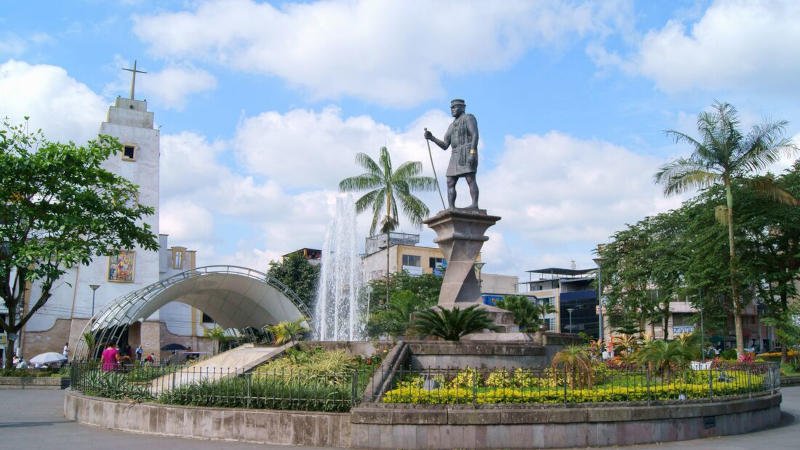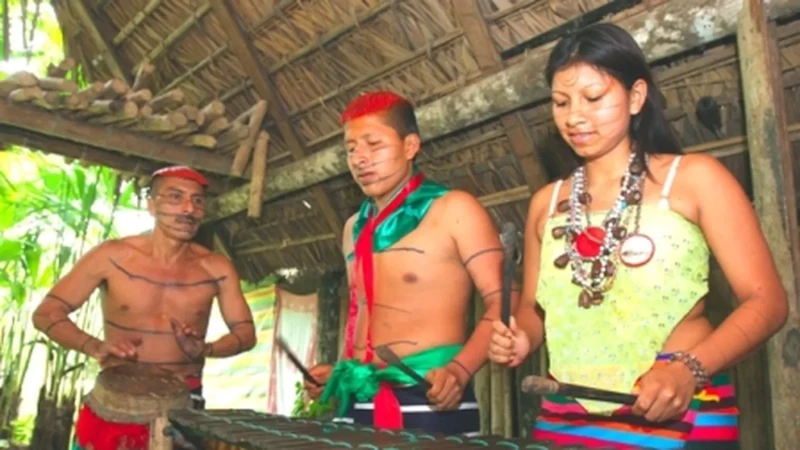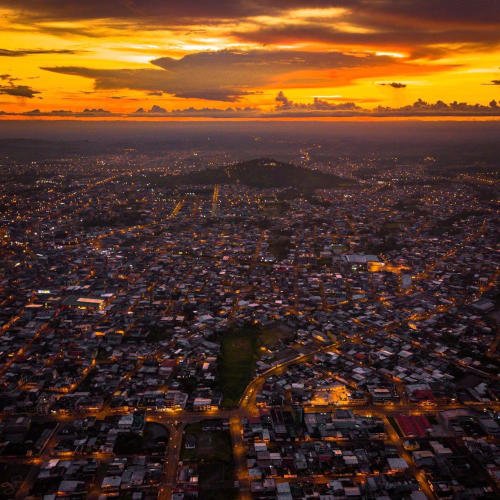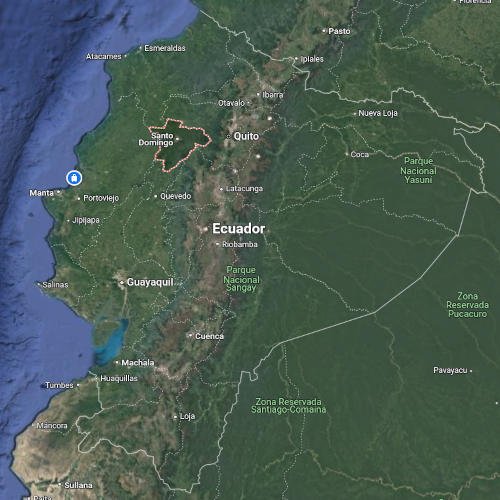
Exploring Santo Domingo, Ecuador: A Vibrant Stop in the Foothills
Santo Domingo, Ecuador, hums with life in the country’s western reaches. It’s got a population of about 334,826, making it the fourth biggest city here. Sprawling over roughly 524 square kilometers (202 square miles), it’s a decent-sized spot. Tucked in the western foothills of the Andes, Santo Domingo sits in Ecuador’s coastal region. Plus, it’s the heart of Santo Domingo de los Tsáchilas Province. Searching for “Santo Domingo, Ecuador travel” or “things to do in Santo Domingo, Ecuador”? You’re in the right place—here’s the scoop.
Santo Domingo, Ecuador’s Culture: Color and Tradition
First up, Santo Domingo, Ecuador, bursts with a unique vibe. The Tsáchila people, or “Colorados,” shape its soul—they’re known for dyeing their hair red with achiote, a local plant. That tradition’s been around forever, and you’ll spot a big statue honoring them downtown. Spanish rules the streets, but Tsáfiki, their native tongue, floats around too. Festivals like the Kasama Celebration in April mix dance, music, and bright outfits—it’s a blast.

Now, food in Santo Domingo, Ecuador, hits different. Tilapia steamed in banana leaves is a Tsáchila classic—simple, fresh, and tasty. Guanta, a local fish, pops up too, often roasted over wood fires. For snacks, bolones—fried plantain balls with cheese—keep you going. Sip chicha, a fermented corn drink, and you’ll taste tradition. Music leans lively—marimba and drums echo Afro-Ecuadorian roots, while pasillo adds a mellow twist. Customs here? Community’s tight—big family meals and warm hellos are the norm. You’ll feel it fast.
Economy and Industries in Santo Domingo, Ecuador
Alright, let’s dive into what keeps Santo Domingo, Ecuador, ticking economically. This city’s got a unique spot in the country, and its economy leans on a few key players. Here’s what I’ve pieced together from what’s out there—straight talk, no fluff.
First off, Santo Domingo, Ecuador, thrives as a trade hub. It’s parked right between Quito in the highlands and the coastal heavyweights like Guayaquil. That location—about 133 kilometers west of Quito and 287 kilometers north of Guayaquil—makes it a natural pit stop for goods moving across the country. Think of it as a middleman city: stuff like bananas, cacao, and coffee from nearby farms flow through here on their way to ports or markets. Roads like the Santo Domingo-Quito highway keep that trade humming, and local businesses cash in on the traffic.
Next up, agriculture’s a big deal. The land around Santo Domingo, Ecuador, is lush—perfect for growing. Bananas are a cash cow; Ecuador’s the world’s top exporter, and this area chips in big time. Cacao’s another winner—chocolate lovers owe this region a nod. Coffee grows here too, though it’s not as dominant. Then there’s palm oil—those plantations stretch out around the city, feeding into both local use and export. Farmers and workers keep this engine running, and it’s a backbone for jobs and income.
Also, construction’s got some muscle here. Santo Domingo’s growing—fast. With a population of about 334,826, it’s the fourth-largest city in Ecuador, and that means buildings, roads, and homes are popping up. The government’s poured money into infrastructure, like fixing up the Santo Domingo-Esmeraldas road, which ties into trade and travel. Local crews and materials keep this sector busy, though it’s not as flashy as agriculture.
Retail and commerce tie it all together. Avenida Quito, the main drag, is lined with shops, markets, and malls like El Coral. You’ve got everything from street vendors slinging bolones to bigger stores moving clothes and gadgets. It’s a bustling spot because Santo Domingo, Ecuador, pulls in folks from smaller towns nearby—think La Concordia or Los Bancos. That foot traffic keeps cash flowing.
Now, here’s the kicker: data’s thin. Exact numbers on which industry’s “top” by revenue or jobs? Hard to pin down. Agriculture likely leads—Ecuador’s export stats show bananas alone hit $4.51 billion in 2023, and Santo Domingo’s in that mix. Trade’s huge too, but it’s more about volume than raw dollars. Construction and retail follow, feeding off the city’s growth and position. Some say tourism’s creeping up—thanks to Tsáchila culture and spots like Bomboli Hill—but it’s not a heavyweight yet.
So, what drives Santo Domingo, Ecuador’s economy? Agriculture—bananas, cacao, palm oil—sets the pace. Trade keeps it connected, construction builds it up, and retail keeps it lively. It’s a practical, gritty mix—no single star, just a team effort. What do you think—any of these surprise you?
Sports Teams in Santo Domingo, Ecuador
Next, sports in Santo Domingo, Ecuador, keep fans buzzing. Soccer’s the star—Club Deportivo Tsáchila stands out, playing in local leagues. They’re based at Estadio Etho Vega Baquero, a 7,000-seat spot that gets loud. Club Deportivo Santo Domingo reps too, drawing crowds at the same stadium. Smaller teams like Atlético Tsáchila mix it up in amateur matches. For “Santo Domingo, Ecuador sports,” soccer’s where it’s at—nothing fancy, just passion.
Distance from Santo Domingo, Ecuador to Airports
Now, let’s map out Santo Domingo, Ecuador, from the skies. Mariscal Sucre International (UIO) in Quito sits 133 kilometers (83 miles) east—about 2.5 hours by car. José Joaquín de Olmedo International (GYE) in Guayaquil is 287 kilometers (178 miles) south—call it 4.5 hours driving. Then, Eloy Alfaro International (MEC) in Manta lies 192 kilometers (119 miles) southwest—roughly 3 hours on the road. For “Santo Domingo, Ecuador airport distance,” UIO’s the closest bet.
Public Transport in Santo Domingo, Ecuador
Getting around Santo Domingo, Ecuador, feels doable. Buses rule—cheap at 30 cents, they crisscross town and beyond. Cooperativas like Reina del Camino link to Quito and Guayaquil—fares hover around $5-$7. Taxis roll everywhere—$1-$2 for short hops; just flag the yellow ones. Mototaxis buzz too—think $1 for a quick zip. No metro here, but roads are busy. For “Santo Domingo, Ecuador public transport,” it’s basic but works.
Attractions Near Santo Domingo, Ecuador (Within an Hour)
Step outside Santo Domingo, Ecuador, and nature calls. La Perla Protective Forest, 20 kilometers (12 miles) north, takes 30 minutes. It’s a biodiversity hotspot—birds chirp, trails wind through jungle. Next, Río Lelia Forest, 35 kilometers (22 miles) east, hits in 45 minutes—think hiking and quiet streams. Then, El Salto del Tigre Waterfall, 40 kilometers (25 miles) southwest, lands in 50 minutes—swim or snap pics by the cascade. For “Santo Domingo, Ecuador day trips,” these shine.
Also, Los Bancos, 55 kilometers (34 miles) northeast, clocks in at an hour. It’s a birdwatching haven—hummingbirds galore. San Miguel de los Bancos, same distance, adds butterfly farms and coffee tours. Closer, La Concordia’s farms, 30 kilometers (19 miles) west, take 40 minutes—taste fresh cacao. Each spot’s a quick getaway from Santo Domingo, Ecuador.


Why Santo Domingo, Ecuador Sticks With You
Santo Domingo, Ecuador, sneaks up on you. Its elevation—625 meters (2,051 feet)—keeps it cool and green. The Tsáchila flair, tasty eats, and laid-back tunes sink in deep. Work hums along, sports spark cheers, and buses roll easy. Attractions in and around Santo Domingo, Ecuador, blend culture and wild—think shamans and waterfalls. It’s not flashy—just real, raw, and stuck between coast and mountains. For “Santo Domingo, Ecuador travel guide,” it’s a sleeper hit. Grab your camera; this spot’s calling.





